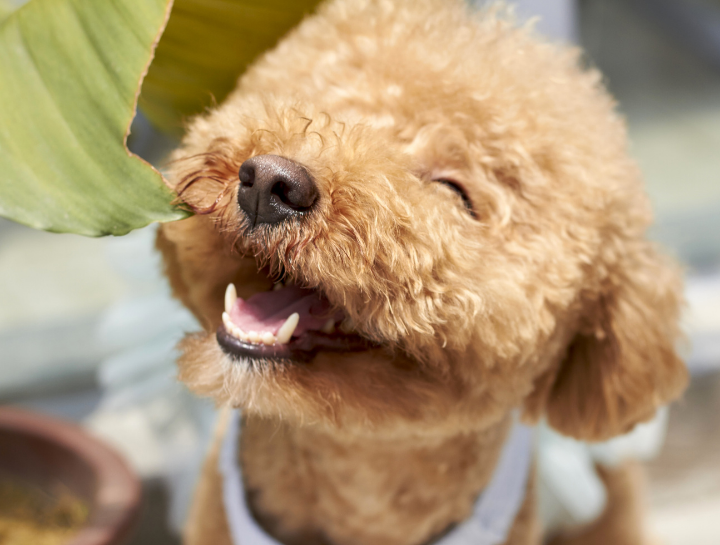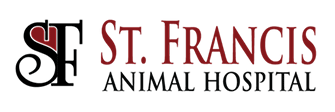Preventive Dental Care
What to expect during a professional dental procedure
Prior to the procedure, we will recommend routine blood work to evaluate your pet’s internal organ function and blood cells (red blood cells, white blood cells, and platelets). Your veterinarian will provide you with an estimate that includes a range for dental cleaning, radiographs, extractions/oral surgery, and post-operative therapy. Unfortunately, it is very difficult to provide a precise estimate for extractions or periodontal therapy until we are able to thoroughly evaluate the teeth under anesthesia and perform dental radiographs.
On the day of the procedure, we will ask you to arrive at 8 am. Dental procedures are performed in the morning and most patients are discharged between 4 pm and 6 pm, depending on their recovery from anesthesia. Your pet will be under general anesthesia for the procedure. Our dentistry patients at St. Francis can expect the following:
- Highly trained veterinarians and technicians experienced in current anesthesia and dental techniques.
- Anesthesia protocols tailored to your individual pet’s needs including local anesthesia and constant rate infusions (CRIs) of pain medications, if appropriate.
- Full anesthetic monitoring including pulse oximetry, electrocardiogram (ECG), blood pressure monitoring, and a dedicated veterinary technician.
- Perioperative fluid support and thermal support.
Our dental patients receive ultrasonic dental cleaning performed by highly skilled veterinary technicians. Any dental plaque/tartar is removed from the visible tooth surface as well as from below the gum line. Periodontal pockets are probed and measured to identify periodontal disease. Intra-oral digital dental radiographs are performed on any fractured, discolored, missing, or diseased teeth and evaluated by the veterinarian.
If diseased teeth are discovered, surgical extractions of those teeth are recommended. In addition, our veterinarians will thoroughly inspect your pet’s oral cavity, tongue, gingiva, and lips. Any masses, oral lesions, or other abnormalities are biopsied (if warranted).
Lastly, your pet will receive dental polishing and fluoride therapy. A dental chart noting any missing, extracted, or diseased teeth will remain in your pet’s medical record and a copy will be provided to you at the time of your pet’s discharge appointment.
There has been a recent fad regarding ‘anesthesia-free veterinary dentistry’. This type of care is not recommended for your pet. The majority of dental disease in pets occurs below the gum line. Without anesthesia, there is no way to assess or treat disease below the gum line. In addition, scaling your pet’s teeth without being able to follow up with thorough dental polishing can actual cause more dental plaque accumulation in the future. Lastly, no tooth should ever be surgically extracted without anesthesia and pain management.
At-Home Dental Care
Regular dental brushing between veterinary visits provides the best possible protection against dental disease for your pet. We can provide you with tips for successful brushing of your pet’s teeth at home. In addition, dental chews, dental diets (Hill’s Prescription t/d), and oral rinses such as C.E.T. Rinse can provide additional management of dental disease at home.
For more information on at-home dental brushing, please learn more in our Home Dental Care page.
We understand that maintaining a healthy mouth plays a key role in your pet’s overall health and longevity, and we look forward to partnering with you to provide the best veterinary dental care possible.
Call us at (651) 645-2808 to schedule your pet’s oral health assessment or dental cleaning.

